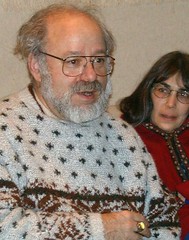
Some 60,000 years ago, deep in a cave on the coast of South Africa the first human discussion occurred. Earlier humans, anatomically identical to the discussants, had a few words, maybe they even made sentences but the discussion, the too and fro of ideas had not yet appeared until that long ago day.
How do we know this? We have no records, the discussants did not have a secretary written language would not exist for another 50,000 years. Paleontology doesn't help, bones from that era are not distinguishable from human bones a good hundred thousand years before then.. The humans in those caves created objects too complex to be the idea of only one person. We have their paintings, tools, sculptures, and jewelry. The art is most important Art, to be worth making, must somehow be appreciated by another individual. Cave paintings imply communication. Perhaps the first discussion was about the weather, but the need to make art left a more enduring record.
Speech is not necessarily verbal. Helen Keller, spoke with sign language. We all speak with the written word. The cave paintings represented another form of speech. "Look, this is a horse!" The effects of the daguerreotype, invented 600 centuries later, would be much the same. "Look, Pierre has created a picture of a horse!" The two acts, however, are very different. The painting is not quite real .. maybe Gron just imagined the horse? Maybe his "speech" is just telling us what horses look like, rather than showing us a real horse? ,A least potentially, the human brain is capable of imagination and creating things that could never have existed. Photographic objects, by definition, have an apparent relationship to real objects.
Perception that an image is "real" can be a very important part of a painting. When one looks at van Gogh's image of farm workers in the field, the harsh sun light MUST represent something van Gough saw. The quality of a painting that conveys reality is not at all clear to me. David Hockney paints in a " photographic style". Yet there is something very unreal and... to my taste... boring about Hockney's work. On the other hand Ansel Adams, a photographer managed to produce images that seem very, very unreal. It is a good idea when looking at one of Ansel's images to leave aside any necessary connection to reality. While a naive viewer may see a photograph, Ansel's images were heavily manipulated by filters, selective exposure, and chemistry of development. And yet we know there is a reality underlying every Ansel Adams print. Put another way an Ansel Adams print is made up of objects taken from reality.
The discipline of working only with the element sof photography implies that photographers work with a vocabulary of real objects, Poets, like photographers, also deal with a limited vocabulary. That vocabulary of sounds, when compared to the sounds available to musicians, is very limited. The poets challenge is to use these words provoke our thoughts. The photographer's challenge is very similar. We work with the lights and darks, the shadows and bright areas that comprise a moment in time.
Back in the cave, today's discussants are trading photographs.




2 comments:
speech is verbal and can be recorded in a written format... i.e. a subset of language.
-T
Is that what speech is? Hmm. We must not be talking here then. The NY times should stop repoting on the President's speeches.
I suppose the point may be that wlaking is something we do with legs. Speech, however is not just the making of sounds. We know this because of the facility humans have for substitution of organs .. Steve Harking uses a mouth pointer to speak, Helen Keller used her flying fingers, you and I are using keyboards.
Whatever happened 6ok yrs ago, it was not, as some have speculated, just a movement of the hyoid bone to allow more sounds.
Post a Comment